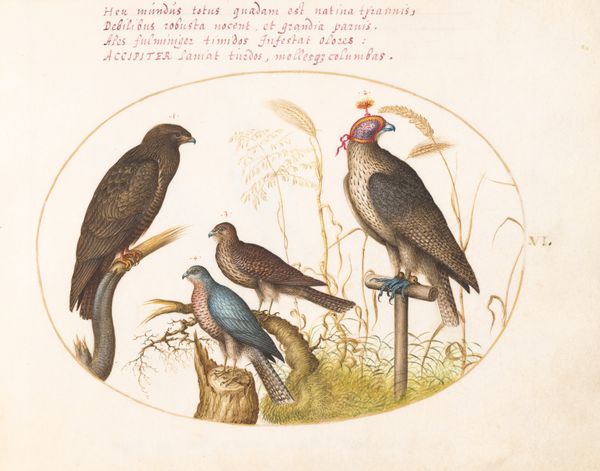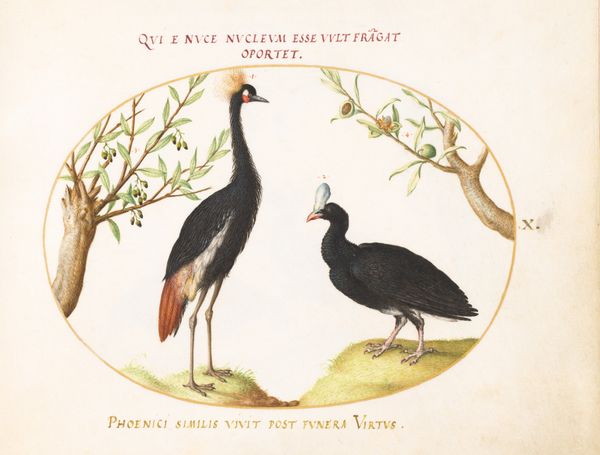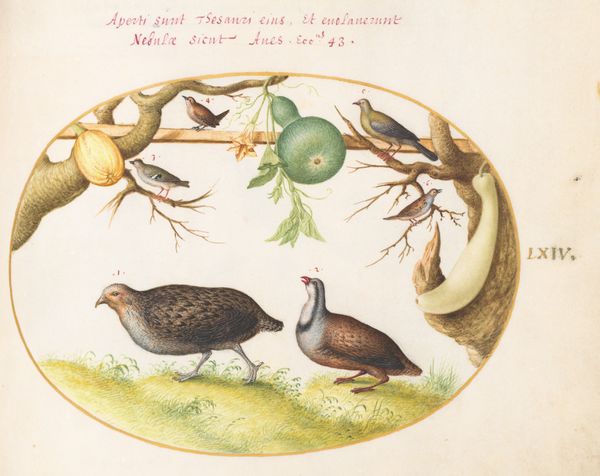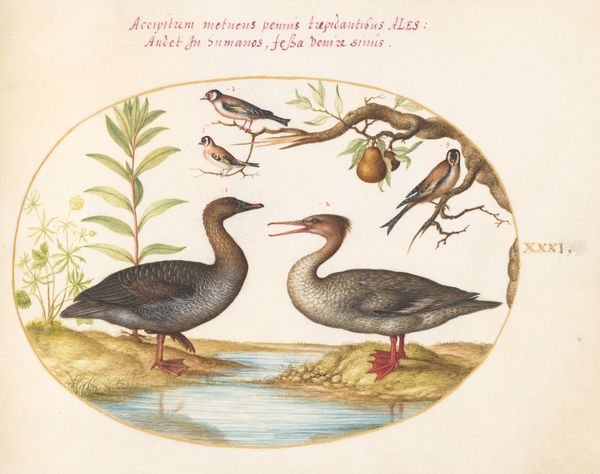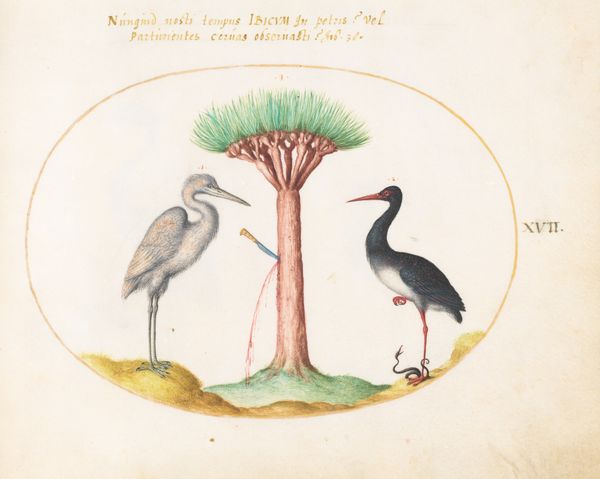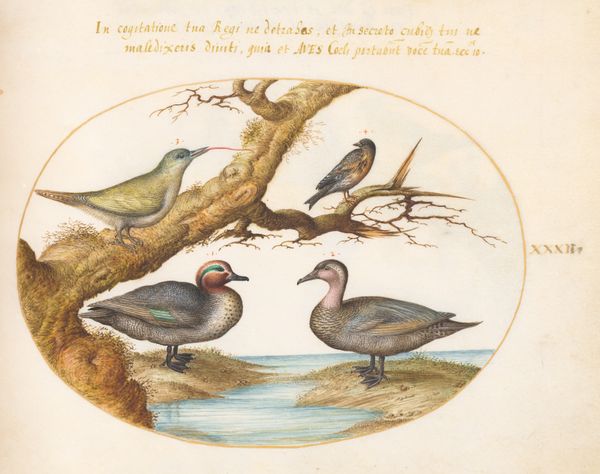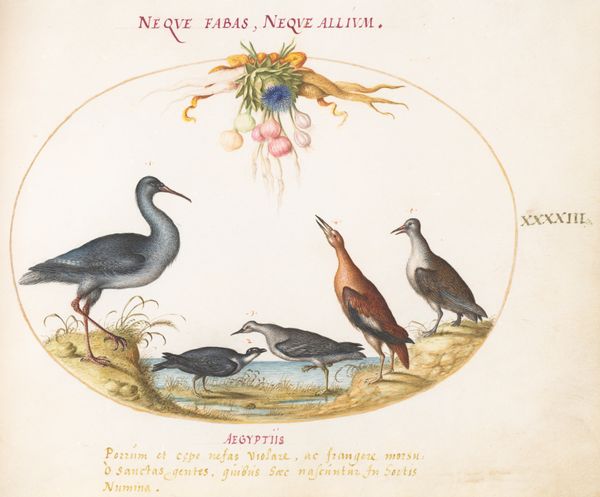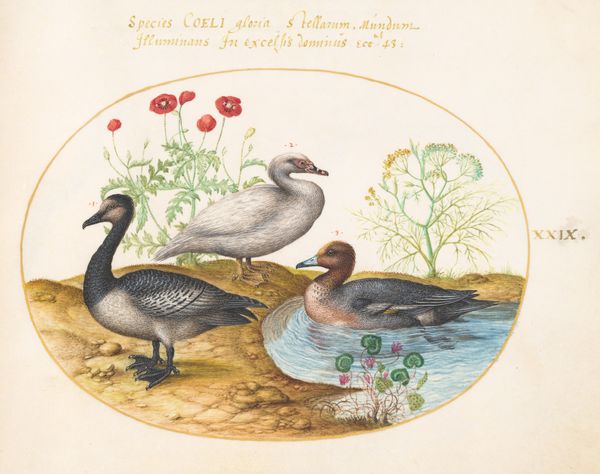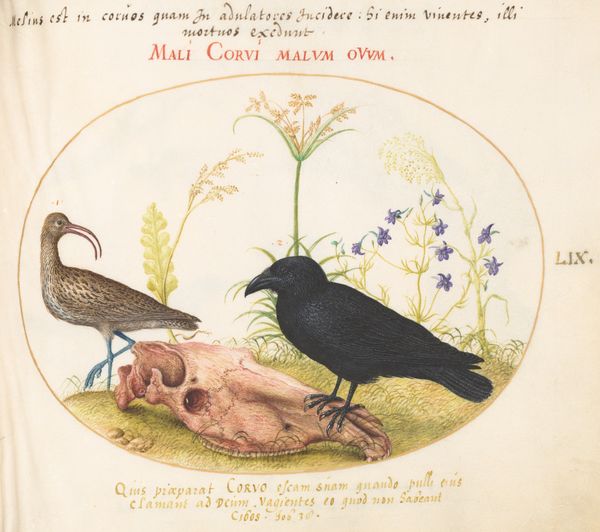
Plate 13: Two Curly Gray Chickens (Silkie Chickens?) c. 1575 - 1580
0:00
0:00
drawing, coloured-pencil
#
portrait
#
drawing
#
coloured-pencil
#
animal
#
figuration
#
11_renaissance
#
coloured pencil
Dimensions: page size (approximate): 14.3 x 18.4 cm (5 5/8 x 7 1/4 in.)
Copyright: National Gallery of Art: CC0 1.0
Curator: Well, isn't this charming! Joris Hoefnagel's "Plate 13: Two Curly Gray Chickens (Silkie Chickens?)" It’s from around 1575-1580 and rendered beautifully in coloured pencil. Editor: They look a bit sad, almost melancholic. The framing adds to that feeling; they’re presented like specimens within this sort of gilded cage or looking glass. Curator: Precisely! Think of the alchemical and early scientific investigations of the period. These weren’t merely decorative drawings; they were often integral to understanding the natural world and its resources. The materiality of the drawing itself—the imported pigments, the paper—speaks volumes about access and the economy of image-making at the time. Editor: Absolutely. And who had access to these images? Courtly elites, the beginnings of a new merchant class, mostly men...I wonder how the labor involved in preparing the pigments and paper itself impacted gendered divisions in art-making. This "scientific" gaze isn't neutral, is it? These birds are literally on display, reflecting back this power dynamic. Curator: Right. The labor! That’s what I mean. And we see how these seemingly delicate works circulated—serving purposes that extended beyond just "art." Were they templates for tapestries? Scientific illustrations later copied in print? We lose that context if we only see them as precious artworks hanging on a wall. Editor: The Silkie chicken breed itself is intriguing. Its origins trace back to Asia; this begs questions about colonial exchanges and the exoticization of non-European cultures. How does the act of meticulously depicting them contribute to this process of “knowing” and therefore controlling? Curator: And even the composition speaks! The Latin phrases surrounding the drawing show how linguistic knowledge intertwines with visual understanding. It wasn't just about seeing, it was about interpreting. Editor: I'm struck by how much can be extracted by closely analyzing the material conditions. Hoefnagel is presenting a kind of colonial encounter right here, not only presenting reality but reinforcing particular modes of thinking about the world. Curator: A reminder that the story of art always involves tangible stuff, material flows, social forces…and of course, charming, if somewhat melancholic, chickens! Editor: Agreed! It forces me to think again about the function of the artist within systems of knowledge.
Comments
No comments
Be the first to comment and join the conversation on the ultimate creative platform.
